
The rugged fragility of the Kamchatka Peninsula
The wild landscape of the Kamchatka peninsula hides an ecosystem increasingly under threat
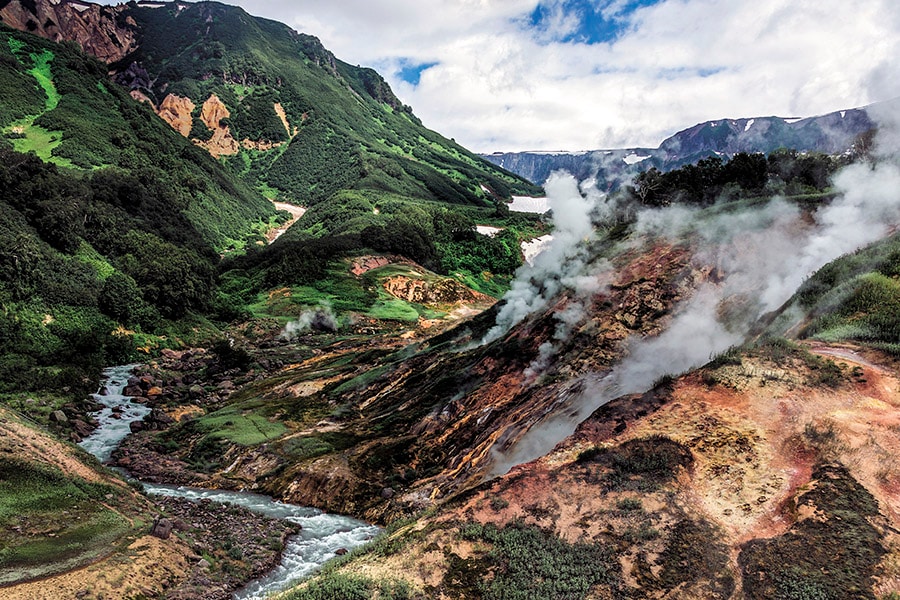 A valley of geysers in the Kamchatka peninsula
A valley of geysers in the Kamchatka peninsula
Image:Vadim Petrakov / Shutterstock.com
Kamchatka is the original land of fire and ice. Situated on the Pacific Ring of Fire, it is home to around 160 volcanoes, 29 of them still active. The ‘ice’, of course, refers to the long cold winters and the permanent snow at higher altitudes. It is no surprise, then, that Kamchatka’s main attraction is the volcanic landscape, replete with calderas, craters, lakes, geysers and mineral springs. It is also one of the few places on the planet that actually lives up to its overused eco-tourism trope—‘wild Eden’.
This pendant-shaped peninsula, which lies in the Russian Far East between the Pacific Ocean in the east and Sea of Okhotsk in the west, is about 1,250 km long and is larger in land size than France. And despite its remoteness and extreme climate, it has a variety of micro-climates that range from sub-Arctic to temperate. This is because of a complex topography that includes river systems, proximity to productive oceans and the 10,500-metre deep Kuril–Kamchatka Trench in the northwest Pacific Ocean. The landscape consists of, in parts, tundra, muskeg (marshy bogs), forests of pine, birch, alder and willow, open woodlands and grasslands which support a variety of plant and animal life.
Given its remoteness, travel to Kamchatka is mostly by air or sea. Mark Beaman, a well-known ornithologist and owner of eco-tourism company Bird Quest, is one of our fellow travellers, and recounts how modern tourism originated in the region. He says that, in the early 1990s, the fall of the USSR created opportunities for travel in the area that was previously restricted to foreign visitors because of the presence of the USSR Pacific Fleet, which included strategic nuclear submarines. Beaman pioneered trips to areas that were rarely visited before, frequently using old, Russian ex-military helicopters.
On one such trip, his group ended up in a coastal town, where there was no accommodation. Noticing a vessel berthed at port, Beaman struck a deal with the captain of the ship to rent its cabins. The vessel turned out to be a Russian research ship grounded by the lack of funds.
The ship we are currently travelling on—the Professor Khromov, operated by New Zealand-based Heritage Expeditions as the Spirit of Enderby—is also of similar origin. Once a research vehicle, it has been converted for cruises, and is chartered to tourist operators to generate lucrative foreign currency earnings.
• • •
It is August, when we travel southwards from Anadyr, hugging the eastern Pacific coast of Russia, to Petropavlovsk-Kamchatsky, the administrative, industrial and cultural centre of Kamchatka Krai. (A krai is one of the administrative divisions of Russia.) The first stop on our way from Anadyr is the town of Egvekinot; the primary purpose of this stop is take on potable water—the ship needs up to 12 tonnes a day.
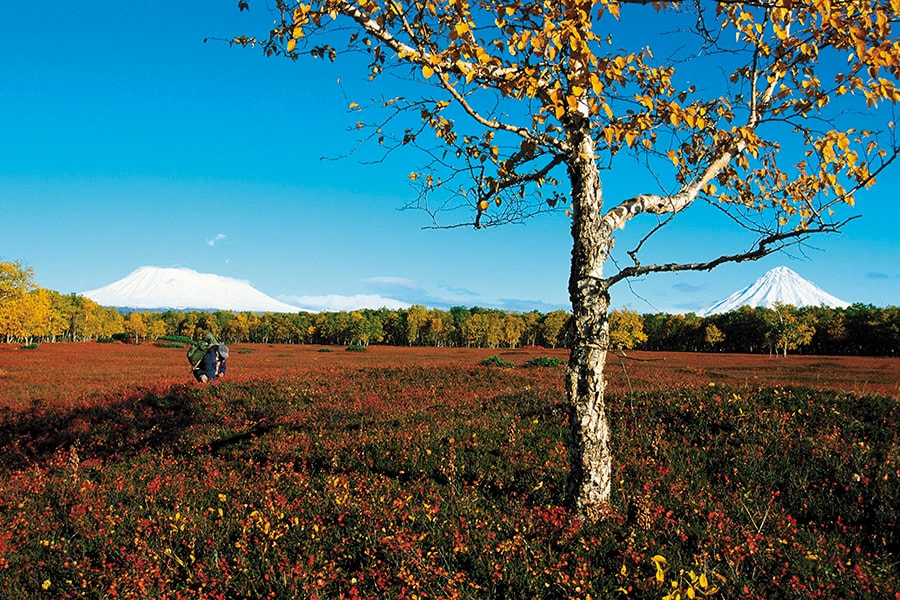 The autumn colours of Kamchatka
The autumn colours of KamchatkaImage: Eric Chretien / Gamma-Rapho via Getty Images
The town was built by Gulag prisoners in 1946 as a port for inland mines. We visit the town’s museum where a guide takes us through Chukotka’s long history. The museum’s prize exhibit is a closely guarded horn from a unique hairy rhinoceros that once inhabited the region, co-existing with mammoths that were common here until 5,000 years ago. We take the opportunity to travel by road to what we have all heard of since our childhoods—the Arctic Circle. A few miles north of Egvekinot, in a heavy glaciated area dominated by wide U-shaped valleys, stands a much-photographed sign across the road, announcing ‘66.34 degrees north’.
After Egvekinot, as we head further south along the coast, the weather deteriorates. Rough conditions in the Bering Sea make our vessel roll till, at one point, it tips to a precarious 45 degrees. And although, over the next few days, we make landings at Cape Navarin, Bukhta Petra, Bukhta Pavlova and Tintikun Lagoon—travelling in zodiacs in groups of six to 10, under the guidance of the naturalists—large swells along the Koryak coast prevent us from making scheduled stops at Pika River, Meinypil’gyno, Verkhoturova and Karaginsky Island.
Despite the showery, misty weather, the autumn tundra is colourful, charged with reds, yellows and oranges, and an abundance of blueberries and lingonberries. The deep fjords are impressive, and although it is too late in the season for many birds to be around, we spot some waterfowl and wading birds around the lagoons. At the Tintikun Lagoon, which is located inside Koryaksky Nature Reserve, we get teasing glimpses of smaller birds such as the Eurasian Nutcracker, Dusky Warblers, Siberian Rubythroats, bluethroats, accentors, and pipits.
While at sea, we see an abundance of tufted and horned puffins, pigeon, common and Brunnich’s guillemots, parakeet and Least Auklets, Pelagic Cormorants, gulls, skuas and fulmars. Majestic Laysan Albatrosses, with their huge two-metre wingspans, occasionally follow the ship.
The most delightful, however, are the fork-tailed storm petrels, which fly, almost bat-like, inches above the waves. These small oceanic birds feed on planktonic crustaceans and small fish, typically while hovering. The petrels give the appearance of, literally, walking on the water.
From the decks of the Professor Khromov, we also get good viewings of sea mammals. For instance, we see colonies of Steller Sea Lions; but the rough seas make it impossible for us to venture out in the zodiacs to get closer views. Named after German naturalist Georg Steller, who first described the animals in 1741, the Steller Sea Lion is one of largest of the eared seals, next only to walruses and elephant seals. The species is classified as near threatened, the result of significant, unexplained declines in their numbers.
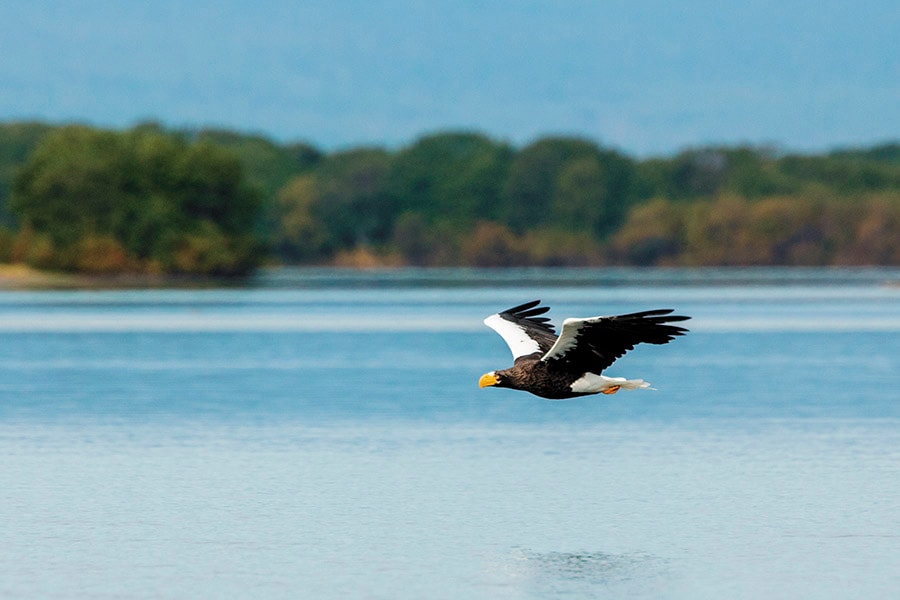 A Steller Sea Eagle glides on the Zhupanova river
A Steller Sea Eagle glides on the Zhupanova riverImage: Janelle Lugge / Shutterstock.com
We see only a few small groups of walruses at sea during the entire trip. Several known haul-outs (beaches where they leave the water to rest) are empty. One reason offered is the bad weather; other explanations—such as human interference, loss of habitat, declining food stocks—are more troubling.
But our luck runs out completely when it comes to land mammals. We don’t get to see any snow sheep or marmots. And although we spot some reindeer, and signs of brown bear— paw-prints, day beds, scat—sightings are fleeting, and at long distance.
• • •
Spotting different species of marine mammals and birds is not simply a tourist activity. A few of us meticulously log sightings of marine mammals and seabirds, including jotting down their GPS coordinates, as these records assist researchers. Like one of the onboard naturalists Olga Belonovich, who is based in Commander Islands studying marine animal species.
A combination of factors such as remoteness, and a lack of funds and resources mean that key habitats are poorly monitored. Olga and a group of travellers from the ship visit a site near Cape Navarin, which has not been visited for more than 10 years, finding over 100 Steller Sea Lions. While the tourists are unable to make a landing at Verkhoturova Island, because of the rough seas, Olga and expedition leader Rodney Russ brave the turbulent conditions to venture out and take a count of sea lions on a rock outcrop visible from the ship; they find 38 adults.
Kamchatka is an important breeding spot for migratory birds, such as the Spoon-billed Sandpipers. This tiny wader’s most distinctive feature is its unusual spatulate bill, whose purpose is still not fully understood. The species is now critically endangered, with the wild population in 2009-2010 estimated to be only 120 to 200 pairs, a near-90 percent decline in the last decade.
Conservation efforts are focussed on two breeding programmes, centred in Chukotka around the Meinypil’gyno village—one of the remotest villages in the world—and the Wildfowl and Wetlands Trust (WWT) reserve in England. The focus is on artificial incubation and captive rearing to increase survival rates. The programmes receive modest support from tourism and Heritage Expeditions, which helps transport field researchers. The initiatives, however, cannot address the main threats to the species’ survival: Loss of habitat on its breeding grounds and, particularly, the destruction of tidal flats along its migratory and wintering range.
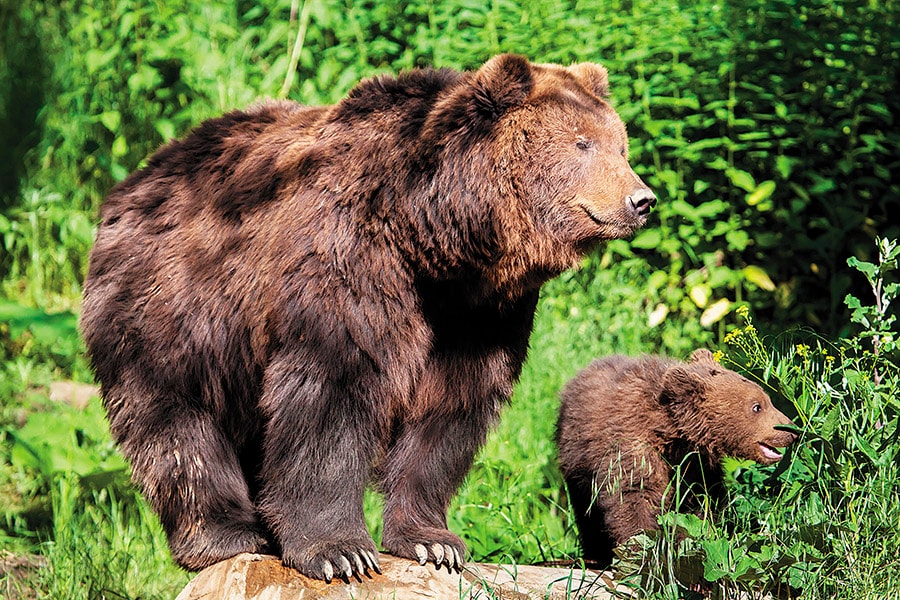 A Kamchatka brown bear with a cub
A Kamchatka brown bear with a cubVladimir Wrangel / Shutterstock.com
In June-July, the birds nest in coastal areas in north-eastern Russia, preferring the tundra, amid grass close to freshwater pools. After breeding, the birds undertake a lengthy migration along the Pacific coast, through Japan, North Korea, South Korea and China, to its wintering grounds in South and South-East Asia. During this arduous journey, it needs to stop and replenish energy reserves in traditional wetland transit stops. Most of these important staging points are now lost or are under threat from human encroachment.
This means that despite well-intentioned efforts, the expensive programmes are probably futile.
• • •
The difficult weather and sea conditions on the coast encourage us to sail for the Commander Islands earlier than scheduled. The latter half of our journey is in near-perfect conditions; calm seas, sunny and clear days, and relatively mild temperatures. 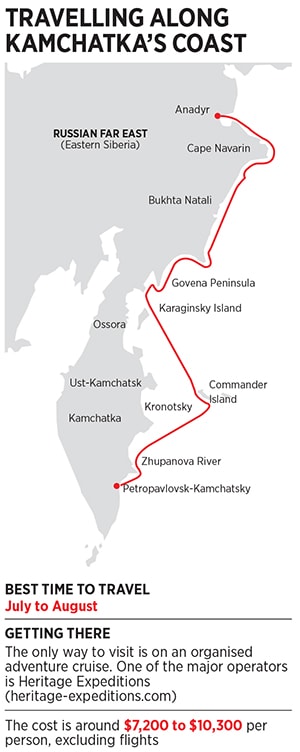
(This story appears in the 03 February, 2017 issue of Forbes India. To visit our Archives, click here.)

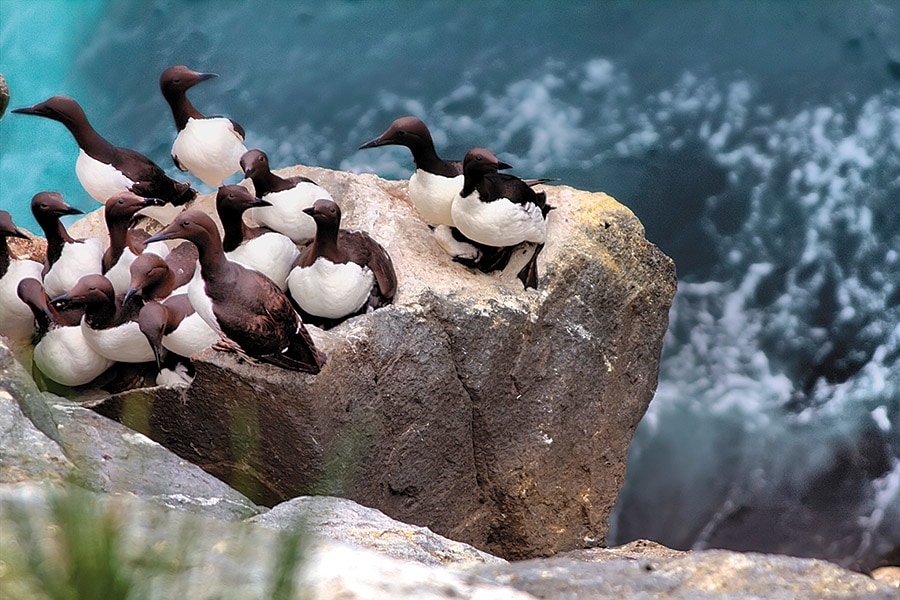 Guillemots gather on a rocky outcrop at the Commander Island
Guillemots gather on a rocky outcrop at the Commander Island













